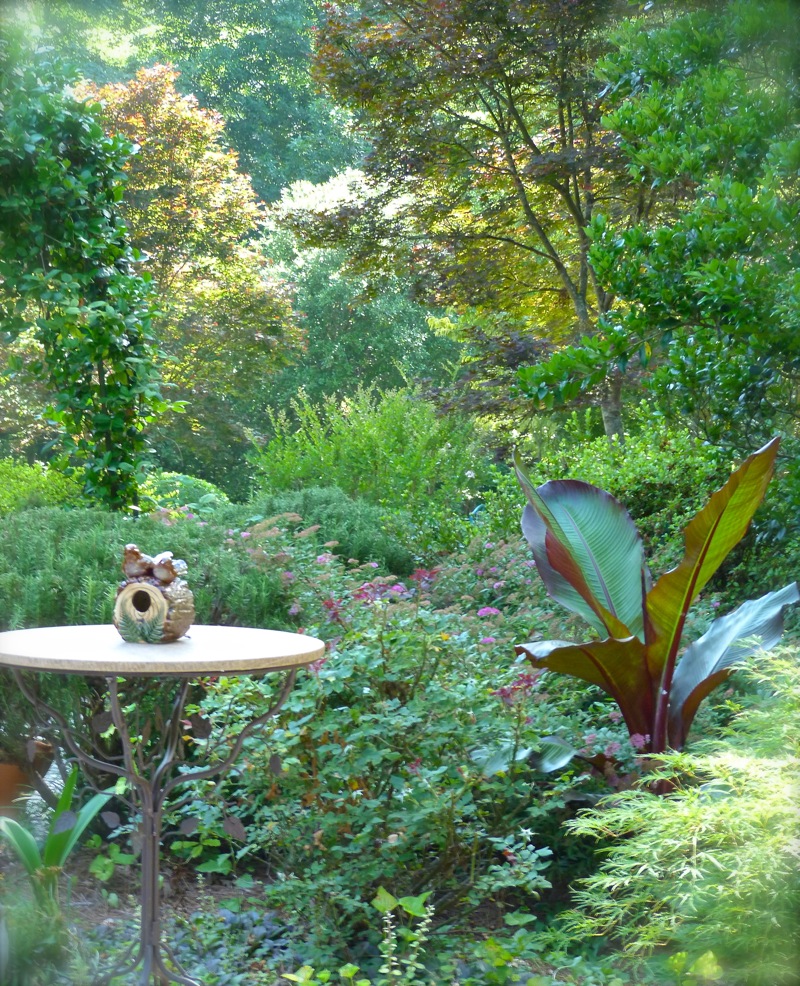Summer Views From the Patio
 Wednesday, June 12, 2013 at 9:50PM
Wednesday, June 12, 2013 at 9:50PM Fallen rose petals lie at the feet of an old rusty rabbit near the patio.  Summer is here. Today the official heat index was 98 and felt hotter than that. I don't like summer. Voles have been snacking in my garden again. Today I lost two mature Nandina 'Firepower' shrubs to them. Mildew has found my dogwoods and crepe myrtles. Every year I try to persuade myself to love summer, but the best I can do is to tolerate it.
Summer is here. Today the official heat index was 98 and felt hotter than that. I don't like summer. Voles have been snacking in my garden again. Today I lost two mature Nandina 'Firepower' shrubs to them. Mildew has found my dogwoods and crepe myrtles. Every year I try to persuade myself to love summer, but the best I can do is to tolerate it.
Despite my perennial complaints, the garden doesn't look bad. We have had enough rain, and the plants are lush. The landscape is layered with deep greens and jewel tones. Even in the mornings it is too steamy to venture outside for long, but here is a report of what is happening on and near the patio:
Okay, I love summer, after all. Look at my red banana plant!
Above: Pink 'Anthony Waterer' spirea, blue flowering 'Lady in Red' hydrangeas, and common day lilies, which have grown here for over a half century, provide some nice color in the garden adjacent to the patio.
Hydrangeas are blooming now. 'Endless Summer' has striking blue color, proof of our acid soil! The variegated plant in the pot is daphne.
Some more hydrangeas — 'Waterfall' is an unusual one growing at the base of a dogwood tree:Annuals on the patio will provide color through the season, as long as I remember to water and fertilize them.
The Talavera lizard above is a nod to the real anole lizards who inhabit the patio every summer. I took the first photo of the lantern below before I realized there was a lizard lookout perched atop the pole. Lou tells me he is there every day.
Something of an oddity, a white poinsettia, left over from the Christmas season, is spending the summer on the patio. It still has its bracts and is now putting on new growth:
One more thing from the patio: I have a little iron bowl ornament, and I have had a hard time finding the perfect place for it. Then one day recently I set it on my penny table, and now it has a home. It looks great with the pennies, and it allows plenty of room for a book and a very cold drink when I am sitting in the adjacent lounge chair.
Be cool!




